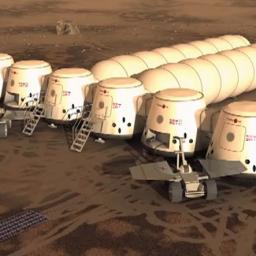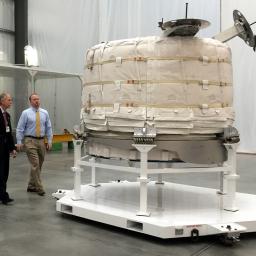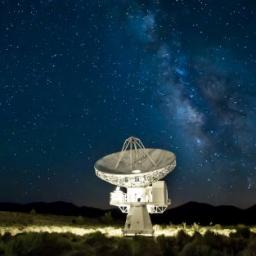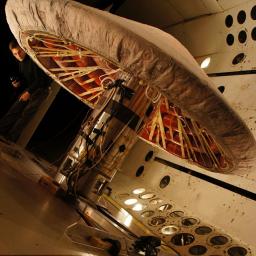
"Mars One" is the hole-in-the-wall company getting mainstream press coverage for promoting unbelievable and non-doable plans to colonize Mars by 2025. Scientists and astronomers are saying that the plan is delusional, laughable, dangerous and a huge scam. Mars One has not developed any kind of space technology that will allow the outer space travel to occur. There were no proven contracts with other companies that provide space equipment. All the people behind Mars One
are just a bunch of scammers.
Last February, Mars One producers announced the final 100 finalists to be among the first six humans to live on Mars. They falsified the claims that they received more than 200,000 applicants for the contest. Roche claims that only 2,761 individuals were interested. All finalists were supposedly to undergo a few weeks of interviews and testing, but it turns out that finalists were only interviewed for 10 minutes via Skype call. They were even asked to donate to Mars One any money they earn from guest appearances. An unbelievable statement because the project was said to have cost the company 'billions of dollars'. Why would they need those small donations?

NASA and Bigelow Aerospace are preparing to launch an
expandable habitat module dubbed "BEAM" to the International Space Station later this year. The 13 foot by 10 foot inflatable capsule will provide astronauts aboard the space station an extra 565 cubic feet of volume (roughly equivalent to a family-sized camping tent) that the astronauts will use for a lounge and also as a testing facility in orbit.
By choosing fabrics over metal, the BEAM module is significantly cheaper to send into orbit than a typical capsule. Expandable habitats could be a new way to dramatically increase the amount of volume available to astronauts while also enhancing protection against radiation and physical debris. In order to stay inflated, the BEAM has
several layers of high-tech fabrics, which will keep the trapped air in, and keep micrometeorites and other types of space debris from puncturing its walls. These walls have already undergone intensive testing to prove their durability. Bigelow has already released two of these 'bubble capsules' into orbit. The first was in 2006, and the second in 2007. Both are still intact in orbit, and the outer skin has endured for longer than experts expected.
It is a sad day for Science Fiction and film fans.
Leonard Nimoy, the sonorous, gaunt-faced actor who won a worshipful global following as Mr. Spock, the resolutely logical human-alien first officer of the Starship Enterprise in the television and movie juggernaut "Star Trek," died on Friday morning at his home in the Bel Air section of Los Angeles. He was 83.
The New York Times has the details.Live long and prosper, Leonard.

A team of scientists from Swinburne University in Melbourne, Australia, has
identified the first ever fast radio burst, sometimes known as a
blitzar, as it happened. These bursts last around one millisecond and give off as much energy as the sun does in a million years.
This blitzar's origin is a mystery, but whatever caused it "must be huge, cataclysmic and up to 5.5 billion light years away," according to researcher Emily Petroff when she spoke to New Scientist. It could be a flare from a giant magnetized neutron star, the collapse of an oversized neutron star, or something else altogether. The data we have reveals that the radiation produced by the blitzar is circularly, not linearly, polaris-which means the waves vibrate in two planes as opposed to one. Which is great! Though nobody knows what on Earth it might mean just yet.

How do you get humans to Mars? Apparently in a giant mushroom.
NASA engineers believe a
lightweight, inflatable heat shield is necessary to sufficiently slow a craft entering a Martian atmosphere, which is much thinner than Earth's. Filled with nitrogen and covered with a thermal blanket, once deployed for landing the spacecraft resembles a giant mushroom. New technology is needed because the type of spacecraft that would land humans on the red planet would be much larger than anything that has landed on the planet previously. NASA engineers have been working on the inflatable technology for about a decade, and believe it is close to being ready for operational use. A test of re-entry into Earth's atmosphere is scheduled for 2016
Back in 2007, NASA engineers gave an
in-depth explanation of the non-obvious difficulties with landing heavy payloads on the surface of Mars. Rockets alone can't be used to land a large craft on Mars, as on the Moon, due to higher gravity. Parachutes also will not work sufficiently in Mars' thin atmosphere for the heavy spacecraft needed to deliver humans to the planet.

The science world has been mostly fixated on Mars and comets, but some scientists at NASA are
starting to talk about Venus -- suggesting a manned mission to our closest neighbor could be simpler and less expensive than a trip to Mars.
Venus is one of the least hospitable places in the solar system. Its close proximity to the sun makes its surface unimaginably hot -- 462 degrees celsius. And its lower atmosphere is a highly pressurized oven of noxious gases. A manned mission to Venus, however, wouldn't have to involve the planet's surface. Researchers say just a few miles higher up and Venus's atmosphere boasts conditions not unlike Earth's, with more a manageable temperature and pressure. A new study by researchers at the Systems Analysis and Concepts Directorate, part of the NASA Langley Research Center, suggests astronauts could circle Venus in a helium-inflated dirigible -- conducting science experiments as they orbit.
This mission calls for
a 129-meter airship floating 50 kilometers above the surface, called the High Altitude Venus Operational Concept (HAVOC), which has a small habitat suspended below and solar panels on top for power. At that level, the atmospheric pressure is one atmosphere. The temperature up that high is only 75 degrees Celsius, which is perfectly manageable. Even at 50 kilometers up, Venus' atmosphere offers ample protection from radiation - it's about the same level you'd experience in Canada. Mars, on the other hand, would expose astronauts to 40 times more radiation than on Earth. Power would be no problem as Venus gets 40% more solar energy than Earth and 240 times more than Mars. Since there is a thick atmosphere, the airship could use that electrical power to spin propellers or turbines for propulsion.
About three billion miles from Earth, a spacecraft the size of a grand piano
is about to wake up. The spacecraft is called New Horizons, and it has been traveling for nine years across the solar system on a high speed journey to its ultimate destination, the dwarf planet Pluto. A few weeks later, instruments on the spacecraft will begin to make observations. No one really even knows what Pluto looks like. Neither of the Voyagers visited Pluto on their journey through the solar system. One sad, pixelated picture taken by the Hubble telescope in 1994 is the best image of Pluto and its moon Charon ever made.
New Horizons is scheduled to make long-range observations of a small Kuiper belt object, temporarily designated VNH0004, in January 2015, before the Pluto flyby. After passing by Pluto, New Horizons will continue farther into the Kuiper belt. Provided it survives that far out, New Horizons is likely to follow the Voyager probes in exploring the outer heliosphere and mapping the heliosheath and heliopause. The heliopause might be reached around year 2047. Even though it was launched far faster than any outward probe before it, New Horizons will never overtake either Voyager 1 or Voyager 2 as the most distant human-made object from Earth. Close fly-bys of Saturn and Titan gave Voyager 1 an advantage with its extra gravity assist.
As news of the Virgin Galactic crash, Antares explosion and Rosetta exploration filled science pages, another space drama has quietly unfurled. In May, Russia launched a rocket to add several satellites to its existing constellation. In the process, it deployed what was first believed to be a piece of space debris but has now become
a matter of great speculation.
Russia did not declare its orbit, and now the U.S. military, space experts and amateur sleuths have been closely tracking its movements, each of which has been deliberate and precise. The unidentified satellite - called Object 2014-28E - recently navigated toward other Russian space objects, its voyage culminating in its recent hookup with the remains of the rocket stage that originally launched it.
There are whispers it could be the return of the
'satellite killer'. The Soviet anti-satellite weaponry program called "Istrebitel Sputnikov" in the 1960s was believed to be permanently retired by the Soviet Union's collapse.

We live in amazing times.
Ten years after the mission was conceived and set into motion, European scientists have landed a spacecraft on the surface of a comet. Despite the fear stemming from the unknown consistency of the comet's surface, which could have ranged from powdery to tarry frozen to anything in between, Philae sank only 4cm into the surface, which indicates perhaps a slight coating of dust.
Over the coming months as Philae piggybacks on the comet and Rosetta maintains orbit, the data they send back could be key to unlocking answers about the formation of the Solar System, the origins of water on Planet Earth and perhaps even life itself.
Rosetta selfie with Comet 67P in background
The challenge for the flight team operating Rosetta from back on Earth was to land Philae on a rotating, duck-shaped comet travelling through space at 18km/s (40,000mph).
The BBC has tons of coverage of the event. Amazing, simply amazing. If you checked my productivity and web-browsing habits today, you'd discover I checked into the BBC's live coverage this morning and was glued to it for the rest of the day. I wasn't around when we landed on the moon, but this is an even more impressive, technical feat. Congrats to everyone who made this happen!

Elon Musk
announced that SpaceX is looking to launch a
700 micro-satellite constellation to bring global Internet access across the world. Each satellite will weigh less than 250 pounds and use radio spectrum allocated to WorldVu Satellites, Ltd.
Although still in the planning stages, SpaceX may end up helping in the construction and launch of the largest fleet of satellites yet.
 "Mars One" is the hole-in-the-wall company getting mainstream press coverage for promoting unbelievable and non-doable plans to colonize Mars by 2025. Scientists and astronomers are saying that the plan is delusional, laughable, dangerous and a huge scam. Mars One has not developed any kind of space technology that will allow the outer space travel to occur. There were no proven contracts with other companies that provide space equipment. All the people behind Mars One are just a bunch of scammers.
"Mars One" is the hole-in-the-wall company getting mainstream press coverage for promoting unbelievable and non-doable plans to colonize Mars by 2025. Scientists and astronomers are saying that the plan is delusional, laughable, dangerous and a huge scam. Mars One has not developed any kind of space technology that will allow the outer space travel to occur. There were no proven contracts with other companies that provide space equipment. All the people behind Mars One are just a bunch of scammers.




